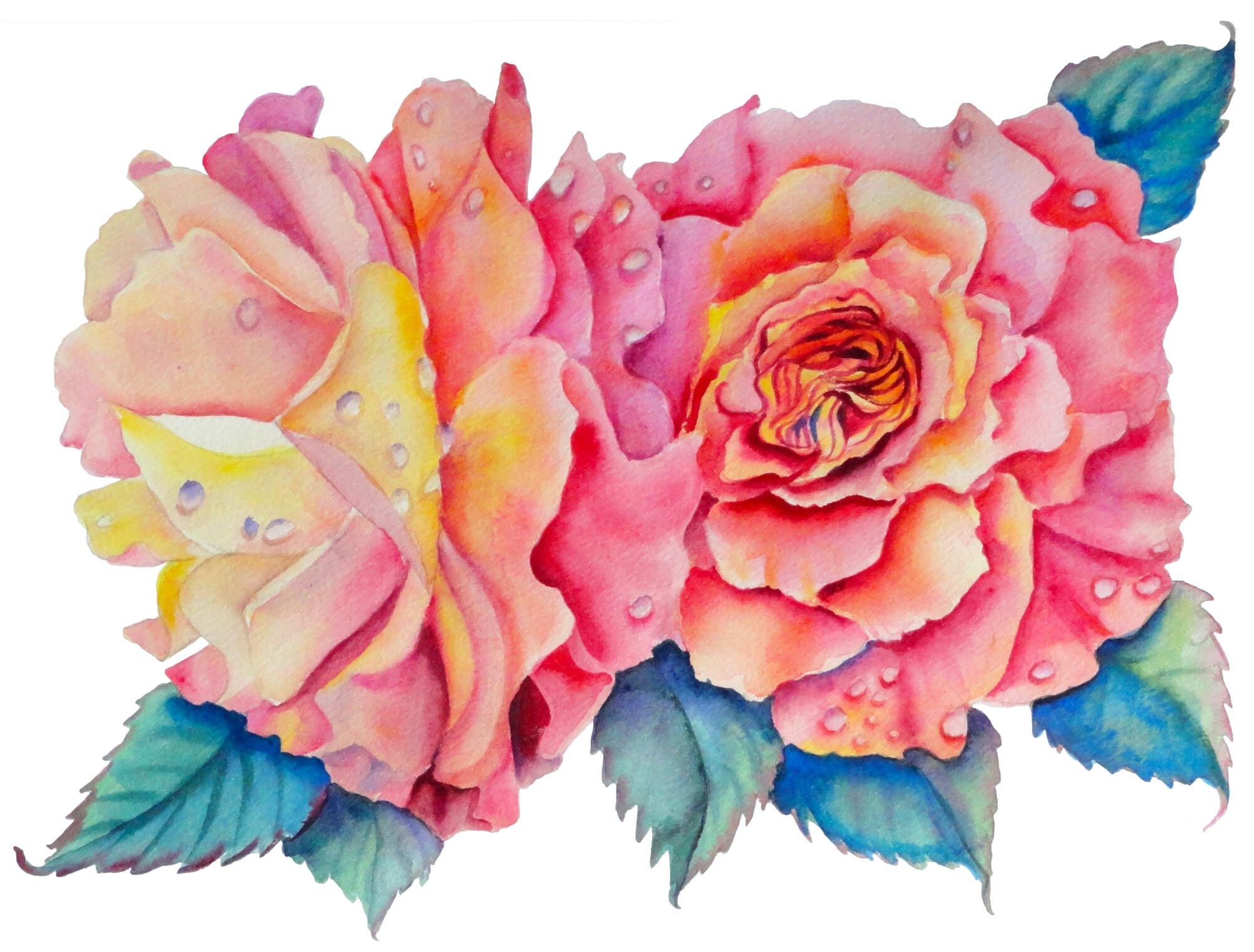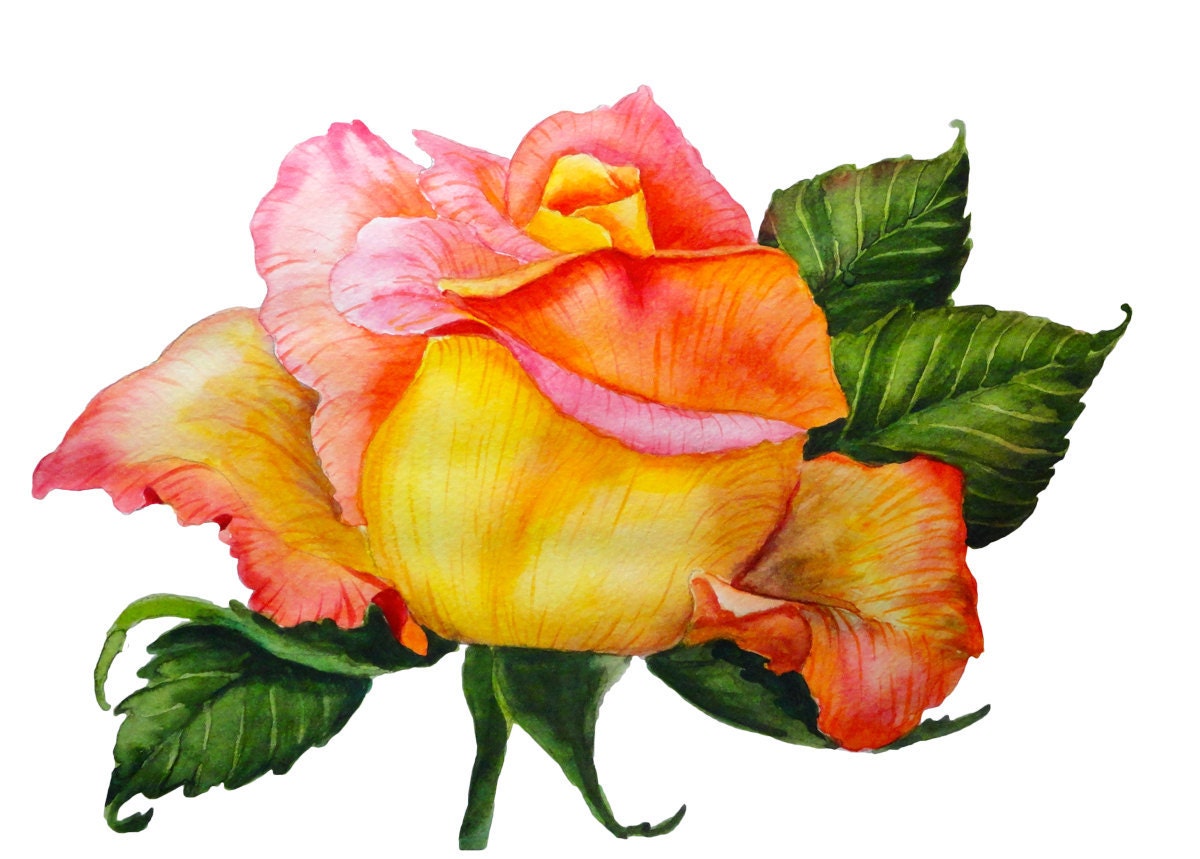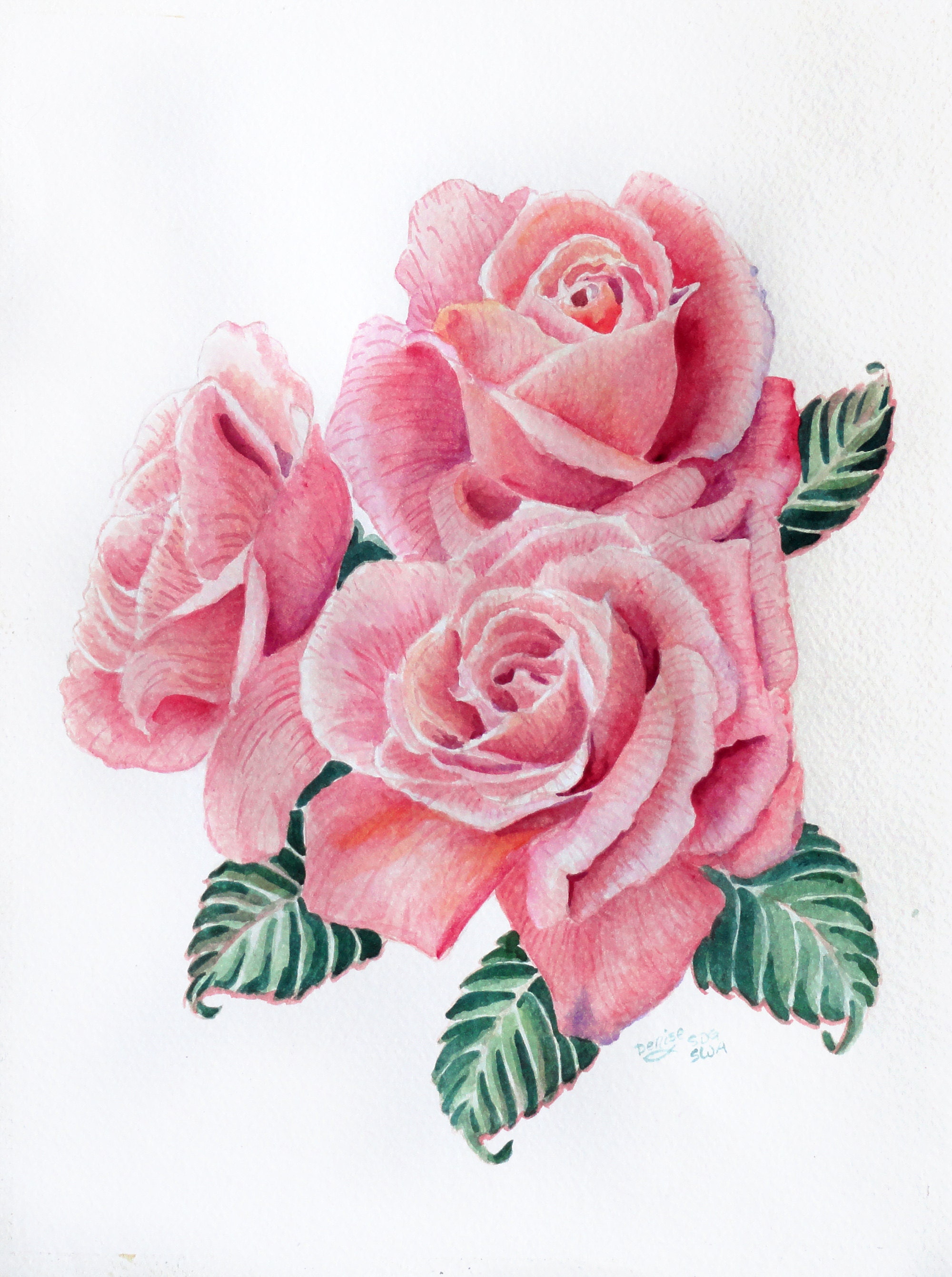Step 1
Always start with good clear photo references with excellent light source and shadows. Without a good photo reference you are only going to paint a cartooned flower. The shadows will not be in the right places and the lines will all be made up.

Step 2
Use some good watercolor paper. I have used some student grade paper 80 pounds or less and the work always shows it. The colors will be muted and the paper will warp. The best paper is archival quality and at least 140-pound weight. Cold press has a nice texture to the paper but if you don’t want that, use Hot press paper.
Step 3
Draw the reference using a light pencil line that can be erased later. Heavy pencil marks will show in the finished work so sketch lightly. Also, you don’t want to press very hard as that will leave a dent or mark on the paper even when the pencil is erased later. Be careful to use a spare piece of paper or tracing paper to rest your hand on because the oils from your hands will prevent the watercolor from sticking to the paper well. Erase as little as possible because erasers can bring up the fibers of the paper and also leave a “mark” once you paint over it.
Step 4 Begin by painting very light lines over the pencil marks using the colors of the object you are painting or the shadows. In this case, I painted pink lines on the flower petals and green lines for the leaves.

Step 5
Erase the pencil lines thoroughly.
Step 6
Paint a base layer of each petal and each leave then leave it to dry.
Step 7
Each successive layer from here is painted to build up the intensity of color and add details. I can add as many as 7 layers to each petal, especially in the shadow areas.
Step 8
This is the last detail, to paint the veins of the petals. It adds depth because the veins follow the contour of the petals and make the flower pop with realism.
Step 9
Always sign your work. You don’t have to put a date or year, but sometimes it is very helpful to look back and see your progress over the years.

My last tip is to paint constantly. Each painting teaches you something and is an exercise for the mind and eye as well as the dexterity. Like exercising your muscles makes them stronger, exercising your skill makes it better.

Enjoy.